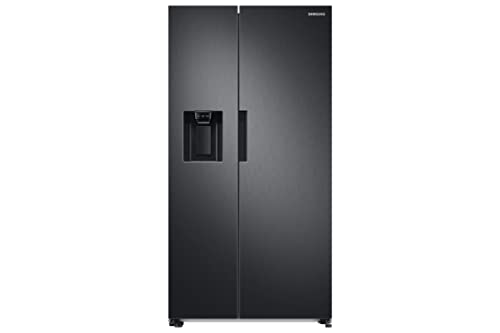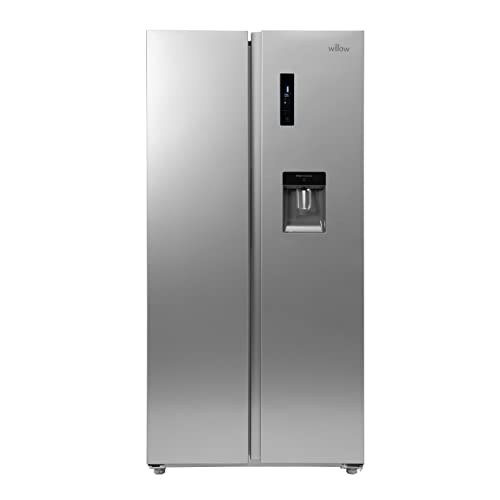5 Killer Quora Answers On Refridgerator UK
페이지 정보

본문
 The History of the Refrigerator
The History of the RefrigeratorThe traditional refrigeration of food items generates significant greenhouse gas emissions because of leakage of refrigerant and electrical power consumption. In 2019, these emissions accounted for 3.2% of the total UK annual territorial GHG emissions.
 Refrigerators were not widespread in British homes until the summer of 1959. Before that, the majority of households relied on cold slabs that were placed in pantries. These were inefficient and did not maintain a constant temperature.
Refrigerators were not widespread in British homes until the summer of 1959. Before that, the majority of households relied on cold slabs that were placed in pantries. These were inefficient and did not maintain a constant temperature.The History of Fridges in the UK
Refrigerators are among the most important kitchen appliances, which allows us to keep our food and drinks fresh for days at one time. They are also extremely energy-efficient. It's easy to forget that refrigerators were once a luxury, but. It wasn't really until the 1950s that they began to become popular. It was the summer heat of Britain that helped make them famous.
Before refrigerators were invented, people used insulated iceboxes in order to keep their food cool. They would collect blocks of ice from lakes in the winter months, and store them during the warmer summer months. The ice boxes were far from ideal, though. They were carried around by an ice man, and they were very heavy. The first electric refrigerators came into the market in 1918, but it was a while before they were commonplace in homes.
The efficiency of fridges has improved significantly over the years. They consume less energy than they did a decade ago, and some refrigerators consume as little as 4 kW*h per day (equivalent to 170 W continuous). A majority of refrigerators in the US have an energy rating of A+.
Early in the 1950s, manufacturers began to introduce refrigerators with separate compartments for freezers. They also started producing models with a chrome finish, which was extremely popular at the time. Since the time, refrigerators are now available in many different colours and finishes. In the 1960s, pastel colors like pink and turquoise were very popular. Earth-tone colors like almond and avocado green were more popular in the 1980s and the 1970s. In the early 1990s stainless steel was beginning to take over.
Fridges in the 1920s
Before refrigerators, people utilized wooden and insulated "ice boxes" to store fresh food and drinks. The iceman would deliver blocks of ice to fill them up, and they kept things cool throughout the year. These ice boxes were usually found in the kitchens of wealthy families.
In 1918, the first electric refrigerator was introduced. It was placed on top of the existing ice box in a home. They were noisy, bulky and costly. The motor was located on the top of the cabinet. They were also referred to as monitor-tops. William C. Durant bought out the Mellowes refrigerator company in 1918 and set up up the Guardian Frigidaire company to mass make refrigerators. Durant was influenced by a design created by Cistercian monk Marcel Audiffren and Swiss engineer Albert Singrun. This was an absorption refrigerator that used sulfur dioxide as a refrigerant.
In the 1920s, these new refrigerators were affordable to many homes. They were able to hold more food and drinks and stayed cooler for longer than old ice boxes.
Refrigerator advertising was creative, captivating and full of promises of cold drinks and chic designs. Vintage ads are interesting to read as they give us a glimpse of the lifestyle of the time.
At the time of the 1920s, electric refrigerators were commonplace in homes. Electric utilities promoted the trend by offering rebates to customers who purchased refrigerators. During the Great Depression, these appliances were considered vital for home survival and their popularity increased.
Fridges in the 1950s
Fridges were still relatively rare in the 1920s, but they became more commonplace in the 1950s. By the late 1960s, they were common in all homes.
Early refrigerators were utilitarian, simple appliances that were matched to kitchen decor. They were usually smaller refrigerators with legs visible, with a wide variety of colors available (though most were in the pastel range - think mint greens). During this period there were a variety of fridge manufacturers which included Whirlpool (who had just made a splash as a leading brand), Gibson, Hotpoint and Tappan.
All of these brands were known for their high-quality, reliable refrigerators. They also diversified their product lines, providing different kinds of home appliances. For instance, Crosley was a manufacturer of radios before they moved into refrigerators in the 1940's and were known for their compact refrigerators that fit well into smaller spaces.
In the 1950's, fridges grew more stylish and were promoted as a status symbol for housewives. They were designed in a way that was in line with the cabinets and walls of the kitchen, and were typically white with chrome handles.
Then in the '60s, fridges began to morph into gadget-driven appliances with features like separate freezer sections and ice cube makers. The manufacturers also began to use less expensive materials, which allowed them to sell their products at lower costs.
Fridges in 1960s
Refrigerators became a common feature in most households during the 1960s, with many households having two fridges. In the 1960s, an average American fridge cost $600 (roughly $7000 in 2024 dollars). At the close of the decade, the price was down to $200.
The fridge freezer collection was a huge innovation at the time. It transformed kitchens and changed the ways we preserved our food. The fridge was also a great home comfort, as it kept dairy and meat longer in freshness. This allowed people to purchase bulk quantities prepare meals in advance and then store them.
The first fridges were made of poisonous gases like ammonia, methyl chloride, and sulfur dioxide for refrigeration, however this was dangerous for humans since these gases were released from refrigerators. A number of people died from poisoning and it was only in 1929 that a more secure method of cooling food using carbon dioxide, was invented.
This meant that manufacturers were able to design safer and more efficient refrigerators for use in homes, with certain refrigerators having an internal freezer compartment that could be accessed by opening the fridge door. These fridges were referred to as bi-door and were extremely popular in the 1950s and 1960s.
The 1960s fridges were sleeker and more futuristic. They were curved with soft curves and a sleek design that reflected an era of efficiency and home freedom. The refrigerators were still large, but the boxy design of the 1940s was beginning to fade.
Fridges Today
Modern buy fridge freezer freezers come in a variety of colors and styles that can be customized to fit your kitchen and personal preferences. Some have intelligent features that connect to Wi-Fi, giving you a speedy way to customize the settings, and some come with a built-in camera that allows viewing your refrigerator from anywhere.
French door models have taken over the market, as consumers want modern looks and features such as water or ice dispensers and flex drawers. In some cases, a smart display. Many of these appliances are also rated as A B, C or even A+ for energy efficiency after the overhaul of the mandatory labelling system in Refridgerator Uk appliances.
We are awestruck by this Hotpoint model due to its sleek design, which features an innovative UVNano technology that self-sterilises the fridge freezer for sale near me to kill germs and two salad drawers with adjustable humidity sliders. It's also large, with plenty of space for jars, bottles and a generous utility compartment inside the door of the fridge.
Refrigerators without an ice tray that is traditional can use up to four times more power than those that do, so look for those with an eco-friendly ICE+ option that uses much less energy. Alternately, you could save even more by choosing a model that has an automatic ice maker that creates a continuous supply of ice ready to use in the morning.
A fridge that is A or A+ in energy efficiency is one of the most beneficial actions you can take to protect the environment. It's important to think about the refrigerator's annual energy consumption as part of your household budget when deciding on a new appliance. It's important to keep in mind that the world isn't one where to buy fridge freezer we can afford to take electricity for granted. Everyone should have access to affordable, reliable energy to lead the quality of their lives and safeguard our planet.
- 이전글What's The Job Market For Landlord Gas Safety Certificate Professionals? 25.01.21
- 다음글9 . What Your Parents Taught You About Samsung Refridgerator 25.01.21
댓글목록
등록된 댓글이 없습니다.


